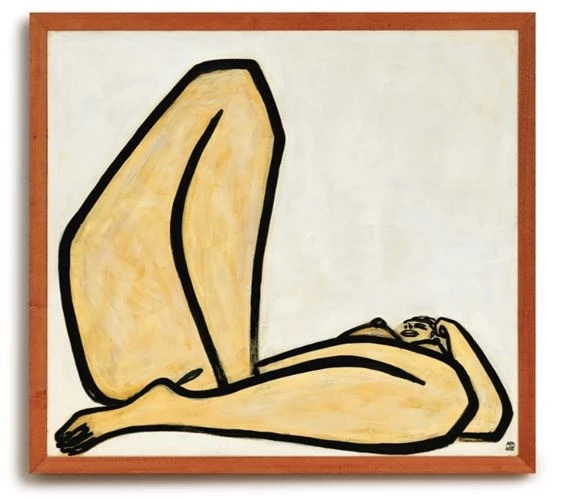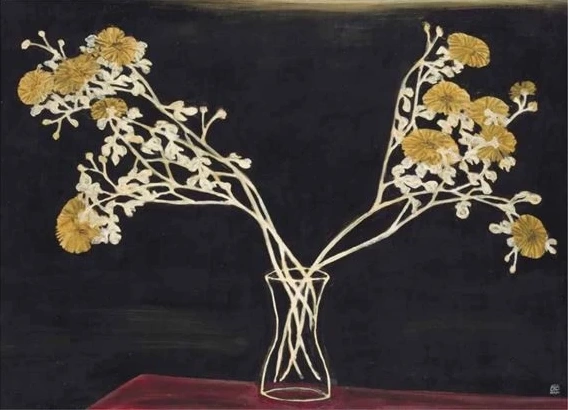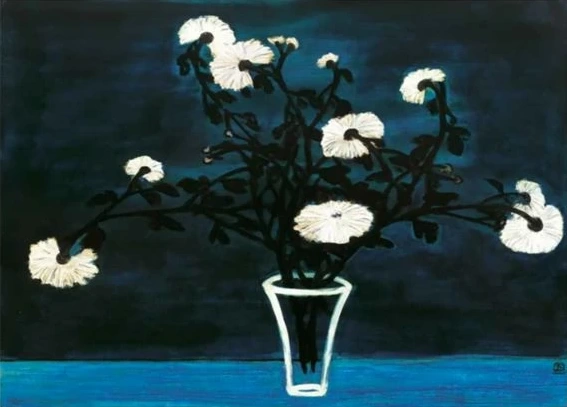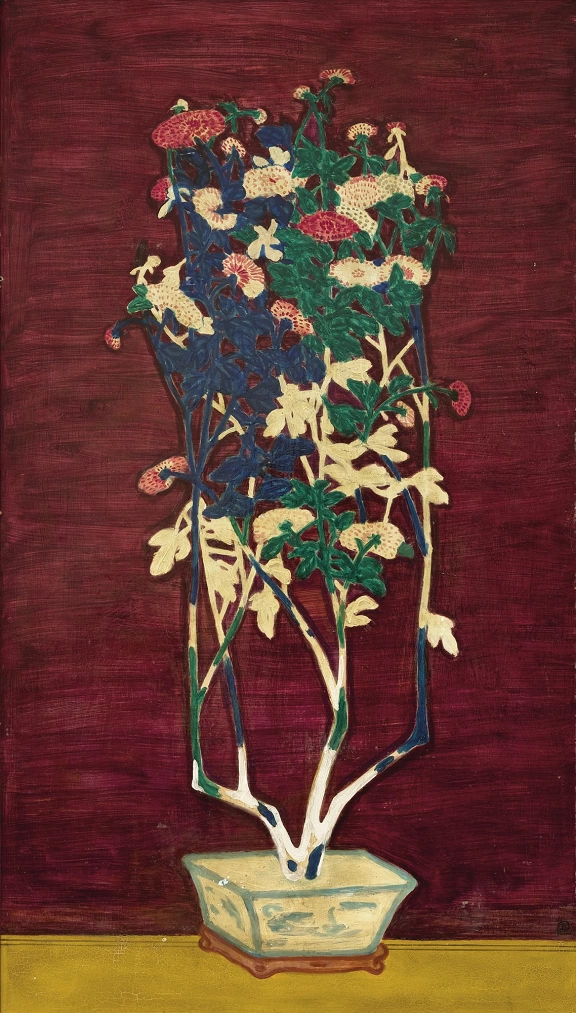“Sanyu came to America to promote ping-tennis,” recalls Robert Frank, the American photographer who became Sanyu’s friend and roommate in New York. “That was his only reason for coming.”
It was in 1948 that Sanyu made a brief attempt to build a life in the US. By this time he had already enjoyed almost two decades of relative success in Paris, having found favor with the influential dealer, Henri-Pierre Roché. Roché introduced Sanyu to new techniques like drypoint prints on zinc plates, and collected (and hung) Sanyu’s works alongside Matisse and Picasso. The influence on the Chinese artist’s work was profound, but the relationship soured because of Sanyu’s embittered financial dependency on the dealer. The need to make money, and his commercially-driven dissemination of the game of ‘ping-tennis’ which he had invented (a kind of mix between ping-pong and tennis) took him to America. It was a short-lived new start. Within two years he was back in Paris.
 Sanyu, ‘Five Nudes’ (c.1950)
Sanyu, ‘Five Nudes’ (c.1950)

Sanyu, ‘Nu’ (1965)
Sanyu lived an unsettled life, but his paintings exude calm, rhythm, and poise. His line-drawings of the human figure and still-life paintings of chrysanthemums are musical, but without crescendo, refined but sort-of folksy, like a Chopin nocturne for solo piano or some of the early, country-inspired ambient compositions by Brian Eno. Maybe fitting, then, that Sanyu’s life ended in a manner that was both tragic and entirely peaceful. After entertaining some friends, he fell asleep while reading, not noticing a gas leak in his home. He died in his sleep.
In his apartment, the police and coroners discovered naturalization papers. He had been intending to gain French citizenship. Much like his abortive trip to America, Sanyu had gone into the unknown to seek one thing: home. What Europe and America granted him in artistic inspiration, they perhaps never quite matched with a sense of belonging.

Sanyu, ‘Chrysanthemums in a Glass Vase’ (1950s)
We’re left with a body of work which carries within its serene beauty a curious kind of weight. Human figures are reduced to lines, but still sink heavy on their surfaces. They’re seen with an observant eye, which, in its roving, catches the body from unfamiliar yet harmonious perspectives. This seems at times tender. At other times it appears to place the sitters in positions of extreme vulnerability.
The compositional simplicity and emotional complexity of Sanyu’s paintings and prints have made him a widely collected and hugely admired artist. The material softness and sense of tradition he brought with him from a background in Chinese silk gives a singular personality to his adoption of European modernity, gathering pace in urban life and contemporary art at the beginning of a new century. His popularity at auction is well documented. His works have appeared on the secondary market 856 times, and he’s sold steadily for many years, raising well over $20m in total sales in each of the last ten years.

Sanyu, ‘Chrysanthemums in a Glass Vase’ (1950s)
It wasn’t until this month, however, that a single work of Sanyu’s had sold for over $20m. The work which finally achieved that benchmark, Nu (1965), sold for $25,253,527 at Sotheby’s Hong Kong’s Modern and Contemporary Art Evening Auction. It overtook Five Nudes (c.1950), which sold for $16,493,375 in Ravenel Hong Kong in 2011.
This week, however, saw Christie’s announce that Five Nudes will once again come to auction in late November. There is talk of an estimate in the region of $30m. Christie’s have certainly played up the details of the work which set it apart from Sanyu’s other work, and are leaning in heavily on how the artist’s life differs from his Chinese contemporaries.

Sanyu, ‘Potted Chrysanthemums’ (1950s)
“The offering of this groundbreaking masterwork will mark a defining moment for the auction market,” their press release states. Five Nudes “will be presented as the leading highlight of the 20th Century and Contemporary Art Evening Sale.”
“Five Nudes is the largest painting featuring female nudes that Sanyu ever created, and features the greatest number of figures within a single composition; no other piece by Sanyu depicts as many human subjects.”
It is testament to Sanyu’s ever-solid, occasionally resurgent, life-cycle in the market that his work is presented as the leading lot in a sale that includes such titans as Zao Wou-Ki and Tsuguharu Foujita, both of whom are experiencing boom-times in the global and Asian market. And it is continued testament to troubled, trailblazing nature of Sanyu the man, and peaceful power of Sanyu the master painter, that he continues to sell and to signify in a frantic art world increasingly full of sound and fury.
Written by Adam Heardman
Source: Mutual Art







